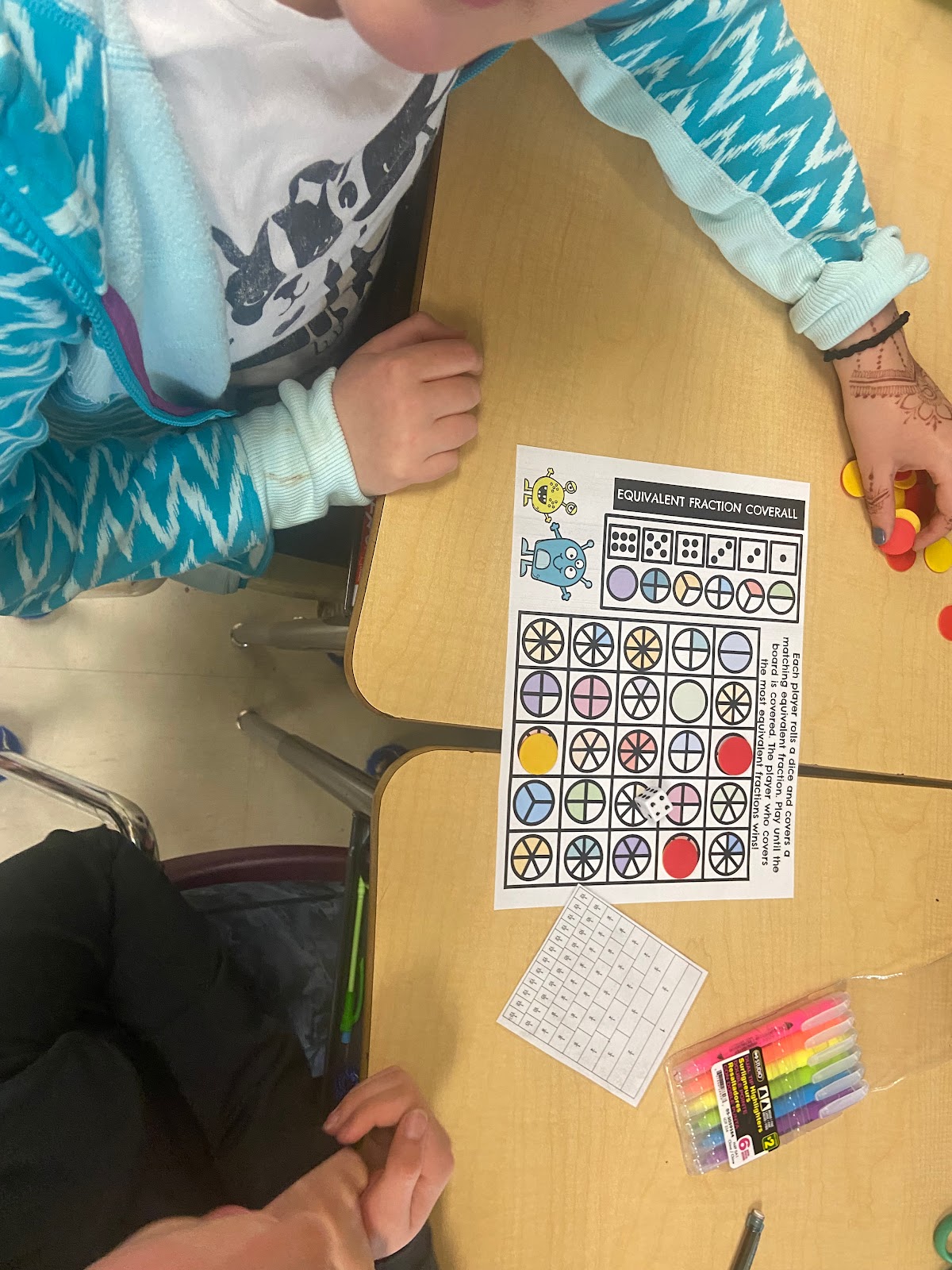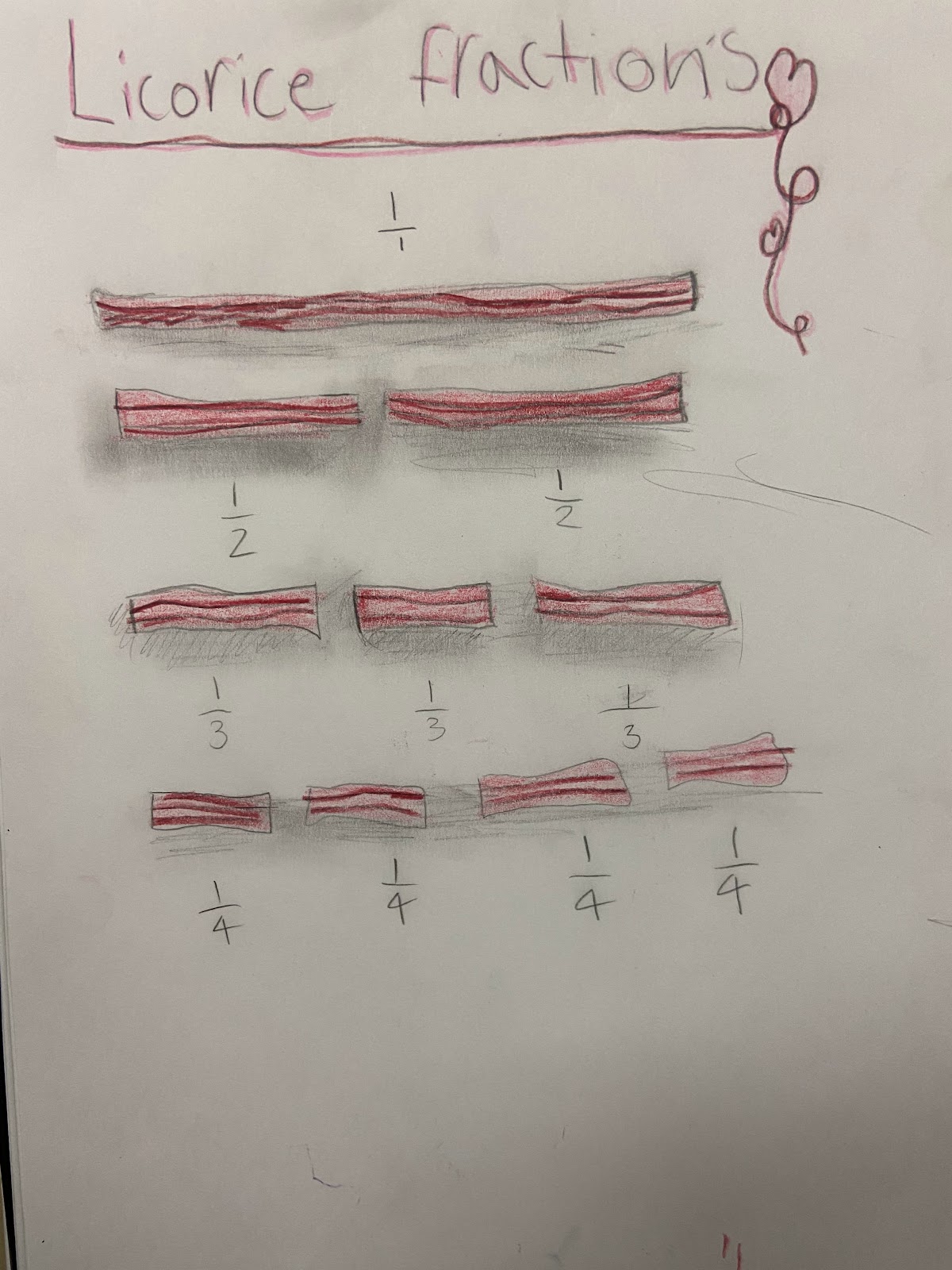Blog Post 33
May 15-19
Learning Outcomes
Mathematics
Demonstrate an understanding of fractions by using concrete, pictorial, and symbolic representations to create sets of equivalent fractions.
What Did Students Do?
This week, students began to learn about equivalent fractions and how to create sets of equivalent fractions.
To introduce the concept of equivalent fractions, students were led through the process of making equivalent pieces of liquorice. They created a fraction tower with their liquorice pieces. They had 4 pieces of liquorice, one whole piece, they split another piece into halves, then another into thirds, and their last piece into quarters. Students then created a visual journal page to represent their learning.
Students also played an equivalent fraction dice game that required students to partner up and match equivalent fractions until the board was covered. Whoever had the most fractions covered by the end of the game, won!
Ask Your Child:
- What is an equivalent fraction?
- What strategies can you use to make a set of equivalent fractions?
- What is a fraction tower?
- What method of finding equivalent fractions do you prefer? (visual- rectangle/circle model, multiplication, division)
Big Brave: WOW! Our school has already raised over $32 000 towards Kids Cancer Care, we are so proud of our students! As a reminder, please make sure if your student is participating in the big brave event next Friday, that they need to be registered through the Andrew Sibbald School page to take donations.
Coming Up
Victoria Day – No school for staff or students – May 22nd
New Kindergarten Orientation – May 25th (6:00 – 6:30 p.m.)
Big Brave Event – May 26th (9:00 – 11:00)
Professional Learning Day for staff/no school for students – May 29th
Volunteer Tea – June 2nd (10:00 – Invite & RSVP required)
Fun Snack – June 2nd




Comments
Post a Comment